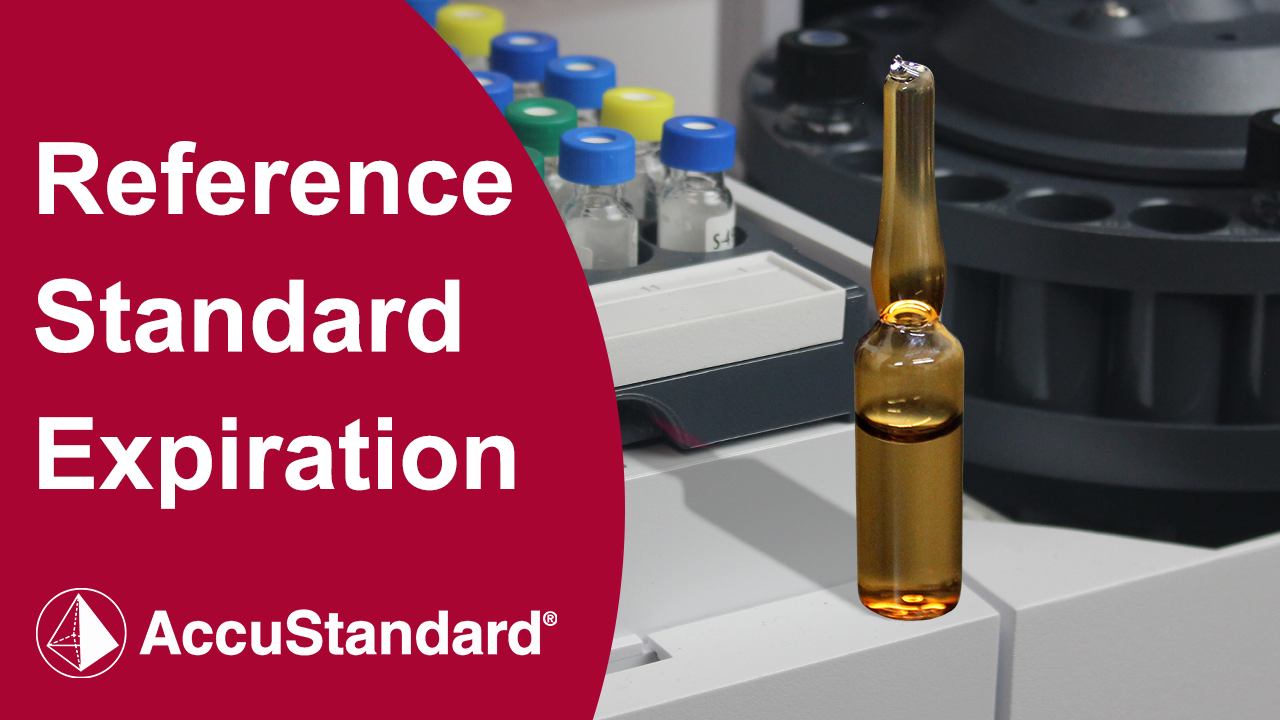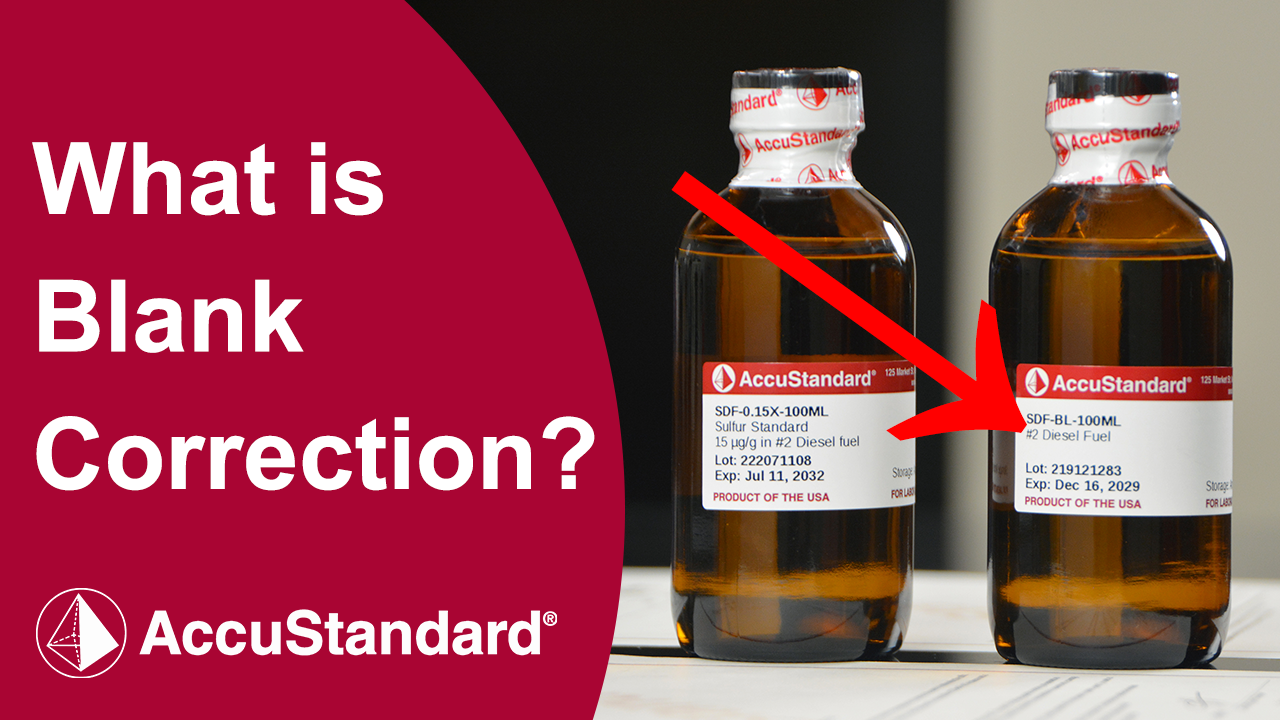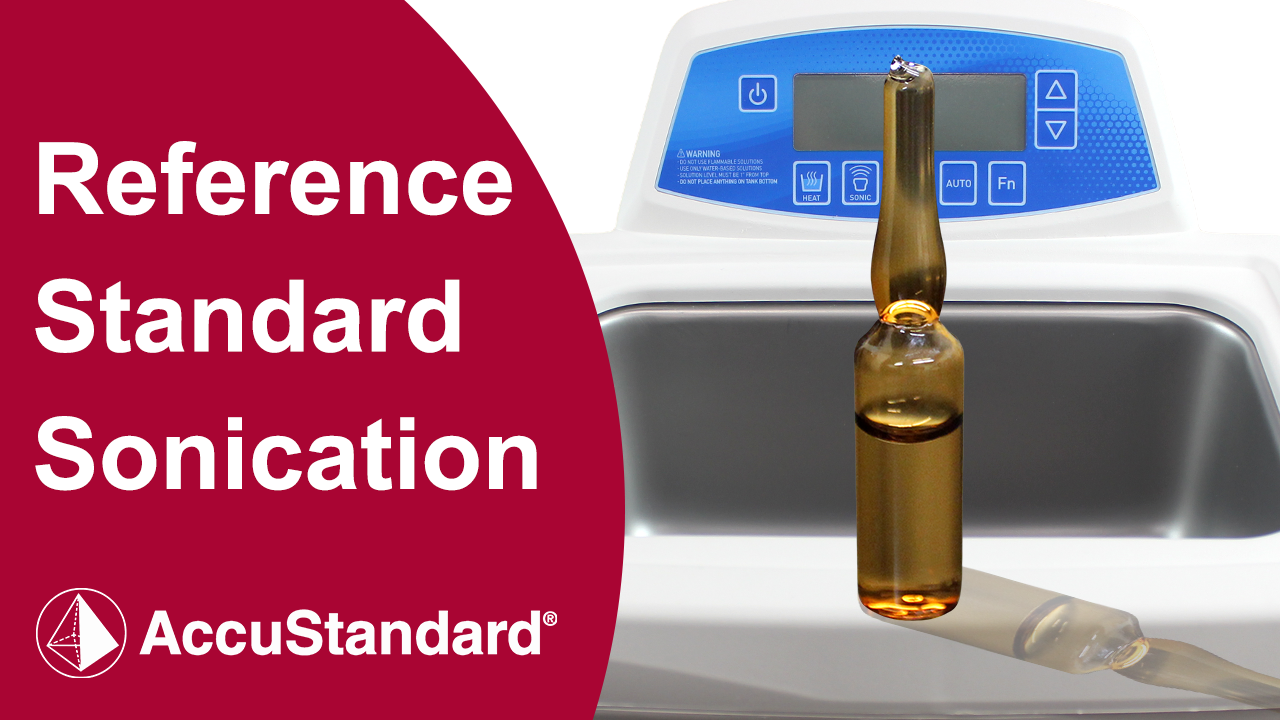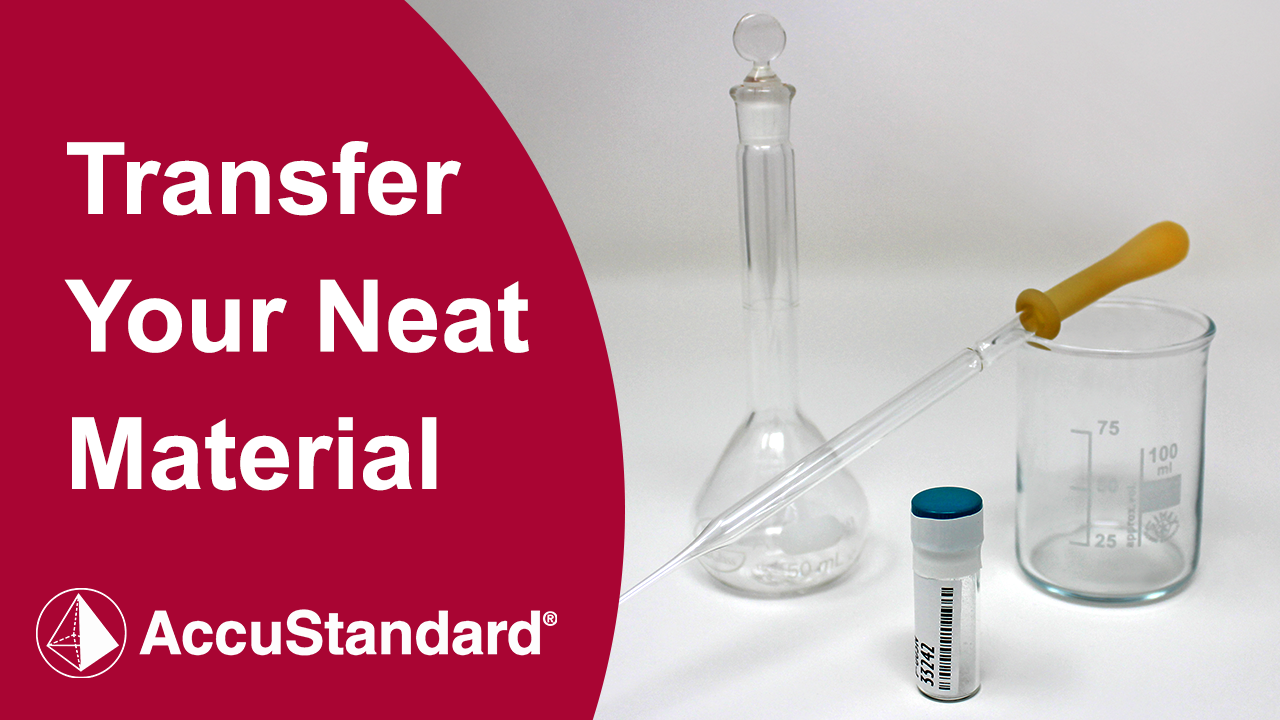Click "Allow Cookies" to consent to storing cookies on your device to improve your experience on our site. Learn more.
Frequently Asked Questions
Quality
How can I be assured of AccuStandard’s Commitment to Quality?
AccuStandard is accredited to ISO 17034, ISO/IEC 17025 and certified to ISO 9001. Our quality system undergoes multiple audits each year and has become stronger and more robust with each review. We hold regular interdepartmental nonconformance meetings to determine the cause of each nonconformity and make the appropriate corrective actions in an effort to eliminate the possibility of repeat occurrences.
How is uncertainty reported?
Although uncertainty relates to the general concept of doubt, uncertainty of measurement does not imply doubt about the validity of a measurement, but rather the confidence in the validity of a measurement result. Uncertainty takes the form of a range and should never be used to correct a measurement result. The value reported on the certificate should be used as a factor in the laboratory’s uncertainty assessment. The uncertainty values as stated on our Certificate of Analysis have been determined using the EURACHEM/CITAC Guide (Quantifying Uncertainty in Analytical Measurement). We have evaluated both Type A (based on a series of observations) and Type B (manufacturers specifications and calibration data) factors and report a combined expanded uncertainty. The expanded uncertainty provides an interval (or width of the margin) and a confidence level (how sure we are that the “true value” is within the margin).
What is AccuStandard’s policy for determining the expiration period for products?
Chemical Reference Materials, like all chemicals, can undergo changes or decomposition under certain thermal conditions or as a result of interactions with air, moisture and other chemicals and solvents. The likelihood and extent to which this happens is dependent on the specific chemical structure and can be predicted based on experience and an extensive knowledge of the behavior of the particular chemical and over twenty years of stability data. Based on this information, we assign a period ranging from three months to ten years.
Can the expiration period for products I have already purchased and not used be extended?
Sometimes it is possible to extend the expiration period of a product. Our QC department will test a retain of the product and may extend the expiration date if it is still within specification. Contact our Technical Service department for additional information.
How do I know the shelf life before I purchase a standard?
Most inorganic single-component standards have a shelf life of 3 years while most of the mixes have a shelf life of 12 to 18 months. Most organic standards have a shelf life of one year or more. Some organic standards are more thermally labile and last a shorter period of time. These products are marked with a snowflake icon in the catalog, and should be ordered with a cold pack to lessen the temperature effects during shipment. Ask the customer service representative for the actual remaining shelf life of the existing lots when you place your order.
Are your Standards NIST Traceable?
Yes, when available, AccuStandard provides NIST traceability. The traceability reference is stated on the Certificate of Analysis that is provided with the standard.
Organic Information
How can I get an independent lot to use as a second source?
For certain products, AccuStandard can prepare a second standard if only one lot is available. Ask the Customer Service Representative if this is an option.
What is a "Technical Mixture" and why is that important in my use of Reference Standards?
Technical Mixtures, or tech mixes, can be mixtures of multiple chemicals or contain multiple isomers of the compound. Chromatograms of these products will have multiple peaks. These peaks are NOT impurities, but components of the product. The use of technical mixtures as reference materials is important for identity of substances (qualitative or quantitative), calibration, assessment of measurement and quality control. Contact our Technical Service Department for additional information.
Why do I need a blank for my sulfur, nitrogen, or chlorine calibration sets?
A matrix blank is used for chlorine, sulfur and nitrogen standards to correct for native chlorine, sulfur or nitrogen content found in the matrix. Our matrices that we use for these standards have a small amount of these elements present in them naturally, and our standards do not correct for the native content.
The intention is for the blank to be run for the appropriate element content, and then have the returned value from the analysis subtracted from the values obtained from the standards in the calibration curve to identify the true element content of the standard. From these corrected values, the true calibration curve can be established. This is why the blank is required for all sulfur, nitrogen and chlorine sets we offer unless the concentration is high enough that the small amount of native elements will not affect the results.
Why does AccuStandard use ampules for most of their Organic Reference Materials?
Like most Organic Chemical Reference Material manufacturers, AccuStandard uses ampules. There are many positive reasons for using ampules. One of the most important is that once sealed, they provide a long term, air tight and relatively inert environment that protects the product for long term storage. Ampules preserve the concentration of the analytes since neither the analytes nor the solvent can escape. Ampules do have some inconveniences associated with them, such as snapping them without breaking them and not being able to use a pipette in the neck of the ampule. When snapping ampules, we suggest using an AccuSnap to protect your hands. Alternatively, a folded paper towel, or thick gloves can also provide protection. To transfer from an ampule to another container we suggest either using a clean narrow tipped disposable Pasteur pipette. Once the transfer has been made, the designated portion of the AccuStandard label can be removed from the ampule and attached onto the transfer container for easy identification. To dilute the standard directly from the ampule, we suggest using a CLEAN glass syringe.
Why do some Reference Materials have a very short expiration period?
Certain chemicals, due to their structure, are more likely to react than others. The conditions that increase this reactivity are time, temperature, solvent, other analytes present, air, light and pH. For example, aldehydes and ketones form adducts when methanol is used as the solvent, certain acids will form salts with bases such as amines, and anthracene will react with oxygen in the air to form anthraquinone. AccuStandard works to formulate the most stable solutions possible, but we cannot change the nature of the chemistry of unstable chemicals so some products will have a short expiration to reflect their anticipated usable shelf life.
Why is a Cold Pack recommended with some standards?
Certain of the Chemical Reference Standards are thermally labile. This means they are highly susceptible to change at room temperature or above. For this reason, AccuStandard states the storage conditions on the label. In some of these cases, AccuStandard also recommends that the product ship in a “Cold Pack”, which is a polystyrene foam container that has an ice pack in it. The purpose of the Cold Pack is to delay the exposure of the product to higher temperatures. The purpose is NOT to keep the product frozen. The product will not immediately go out of specifications when the Cold Pack melts or when the product reaches room temperature. Temperature related effects would begin to exhibit themselves at various times (up to many months) after this happens. The Cold Pack simply delays exposure to higher temperatures. When a product is shipped with a Cold Pack, the customer should also consider requesting next-day delivery (where available) and should avoid having the shipment sent on a Friday unless it is approved for Saturday Delivery.
There appear to be crystals in my ampule, what should I do?
Sometimes precipitation or crystallization may appear in a product. This can occur with products that are close to saturation and have gotten cold. If this happens, the solution should be warmed to room temperature and then the sealed ampule should be sonicated for approximately fifteen minutes. Invert the ampule several times and allow the sample to return to room temperature. The standard is now ready for use. If the sealed product has crystals at the top of the outside of the ampule, it may indicate a pinhole break in the seal. In this case, please call AccuStandard Customer Service for assistance.
What does “sonicate” mean?
“Sonicate” is written on the label of products with high component concentrations or cold-temperature storage items because some of the analytes may begin to fall out of the solution under these conditions. This precipitation may be so slight that it cannot be detected visually, however, it could affect the outcome of the analysis. If sonication is recommended, the product should be warmed to room temperature and then the sealed ampule should be sonicated in an ultrasonic bath for at least fifteen minutes. Invert the ampule several times to achieve homogeneity and allow the sample to return to room temperature before using.
How do I get all of the neat material out of the vial?
Even though it doesn’t look like the product is in there, it is. Small amounts (5-10 mg) of powder often are spread over the surface of the vial and cap. If the chemical is a liquid it may coat the walls as a thin layer invisible to the eye. To recover all of the contents contained in a vial of neat material please use the procedure described below:
- Wipe the outside of the vial (containing the Standard) clean and dry (including the cap).
- Weigh the entire unit on an analytical balance. Record the weight to the nearest 0.1 mg.
- Carefully transfer the contents to a volumetric flask using a suitable solvent. Rinse the cap and vial several times to assure a complete transfer.
- Dry inside and outside of the vial and cap with mild heat or inert gas.
- Weigh the empty dry vial on the same analytical balance to the nearest 0.1 mg and calculate by difference the amount of material transferred.
Are there special considerations for Volatile Analytes?
Volatile Analytes, especially gases, can be troublesome to analyze. To provide the best possible standard we suggest the following procedures:
- Keep the ampules cool (follow the storage conditions on the label).
- Prior to use, invert the ampule several times to ensure the gases are in the solution, not in the headspace. Mixing too vigorously can cause the gases to be lost as well.
- Use freshly opened ampules whenever possible.
- When transferring, take care to avoid losses of the very volatile components. For example, holding the barrel of a syringe in your hand can warm it enough to lose some of the most volatile components.
- If using the purge and trap (PT) system is giving questionable results, try a direct liquid injection. If the results are not as expected, there may be a problem with the PT apparatus.
Why do I get poor recoveries on Endrin and DDT?
Poor recoveries on these analytes can result from an injector port problem. Try cleaning the port or replacing the liner. Most times this will correct the problem. Removing the first few inches of a capillary column can also help. Since elevated temperatures contribute to the breakdown problem, using cool on-column injection method scan be used to avoid this issue.
Why do I have problems when analyzing Phenols and Nitrosamines?
Since Phenols and Nitrosamines can react with the active sites on a column, they can sometimes give inconsistent results from run to run. By saturating these sites, the problem should go away. To do this, run a standard that is between 2 to 5 times higher than your highest calibration point. This can be repeated if necessary until the problem is alleviated. Alternatively silylation can be performed on the column (contact column manufacturer for more details).
Inorganic Information
Why is Nitrite not included in your IC mixes?
AccuStandard has found that mixes that contain both Nitrate and Nitrite are not stable over long periods of time. Typically, the Nitrite oxidizes to Nitrate. This creates a problem for long-term storage of these solutions. Therefore, in order to provide the most stable solution, AccuStandard supplies the Nitrite as a separate solution. Diluting the two solutions together just prior to use will ensure the most accurate values for these standards.
Why is Mercury always separate in your ICP mixes?
Mercury has unique properties that make it not very stable in the presence of other analytes. Some of these properties are: Mercury can easily be reduced to the metallic state, tends to volatilize easily, can precipitate in the presence of even minute amounts of halogens (such as HCl fumes), and can plate onto some surfaces. As a result of these properties Mercury is provided as a separate solution, and if required, can be mixed with the other elements just before analysis.
Are Uranium and Thorium products radioactive? Are they naturally occurring or depleted isotopes?
AccuStandard sells up to 1000 µg/mL concentrations of Uranium and Thorium. These products do not meet the definition of radioactive materials under DOT or IATA regulations. AccuStandard cannot guarantee the exact isotopic distribution for either of these elements.
Documentation
How do I obtain a Safety Data Sheet (SDS)?
The easiest way to obtain an SDS is to enter the AccuStandard Catalog # on our SDS page.
You have a few other options:
- Log in to your account and navigate to My Orders. You can download all available SDS from your order by viewing the order, selecting the desired langauge and clicking the red "Download All SDSs" button.
- You can search for the product in the search box at the top right of the website to find it's product page. The SDS can be downloaded from this page. This is useful if you do not know the product's catalog #.
- SDS for sets can be downloaded from the product page for the set.
How do I obtain a Certificate of Analysis (CoA)?
You will need your AccuStandard Catalog # and the Lot # for your product. Visit our CoA page and enter the required information.
CoA for sets can all be found on the product page for the set. You will need the individual lot # for each set component in your set.
If you have exhausted all of the options above and still need help finding documentation, please email edocs@accustandard.com.
Ordering
How do I place an order?
You must log in or register to place an order. Once logged in, add items to your cart and proceed to checkout.
How do I request a Quote?
Add the desired items to your cart and proceed to checkout. Select "Proforma Invoice" as Payment Method. Customer Service will review your request and provide an advance copy of the invoice for approval.
If this is a new request for a Custom product, please fill out our Custom Quote Request form.
How do I order a Custom product?
If you have previously ordered this product, you may enter the catalog # in the quick order form. You may also place the catalog # in the special instruction request form at checkout.
If this is a new request for a Custom product, please fill out our Custom Quote Request form.
My company has an account number. How do I add it to my orders?
Please send the email associated with the web account and your account number to siteadmin@accustandard.com. We will connect your customer number along with any applicable terms to your web account and it will apply to any future orders.
Shipping & Tracking
How much does shipping cost?
Shipping costs are calculated when Customer Service reviews your order request. Many of our products have special requirements for shipping and handling.
If you check out using a Purchase Order or Credit Card, you will receive a request submission confirmation from our website. Later an order confirmation will arrive from customer service which will include a full estimate of all charges for the order.
If you select "Proforma Invoice" as payment method at checkout to receive a quote from Customer Service with the exact total cost of your order, including shipping.
What shipping methods are available? Which should I choose?
We offer many shipping methods and the best method for you depends on multiple factors. Our Customer Service team is happy to help assist you in choosing a method.
FedEx:
FedEx Priority Overnight® (Overnight, Next Business Morning)
FedEx Sat. Delivery®
FedEx 2Day® (2 Day Delivery)
FedEx Standard Overnight® (Overnight, Next Business Afternoon)
UPS:
UPS Ground
UPS 2nd Day Air
UPS 3 Day Select
UPS Next Day - Saturday Delivery
UPS Next Day Air (Overnight, Next Business Day)
International Shipping Methods:
DHL (Intl Only)
DSV (Intl Only)
FedEx International Economy®
FedEx International Priority®
UPS Worldwide Express (Intl Only)
How can I track my order?
You can view your Order Status and Shipment Tracking information by going to My Orders and selecting "View Order" on a specific order.
Once an online order has shipped, the Shipment Tracking table will appear.
You can then access tracking information provided from the shipment carrier. You can also download a Packing List to view which items from your order have been shipped.
Why is my tracking number not available ("N/A")?
We update your tracking information based on what the carrier makes available to us. We will update your tracking number when we receive updated information.
How long does it take for an order status or shipment to update?
Order status and shipments are updated a few times each hour during AccuStandard's business day for items that have been ordered online and invoiced.
Tax
Will I be charged tax on my order?
We collect sales tax in accordance with applicable laws. As of January 1, 2025, you can expect us to collect sales tax from the following states:
CA, CT, CO, FL, IL, LA, MA, MI, MN, NJ, NY, OH, PA, SC, TX, VA, WA
Unless we have a valid exemption certificate on file, your company will be subject to sales tax on all orders. Exemption certificates can be emailed to accounting@accustandard.com.
How do I submit my tax exemption status?
Please reach out to our accounting department. Exemption certificates can be emailed to accounting@accustandard.com.





